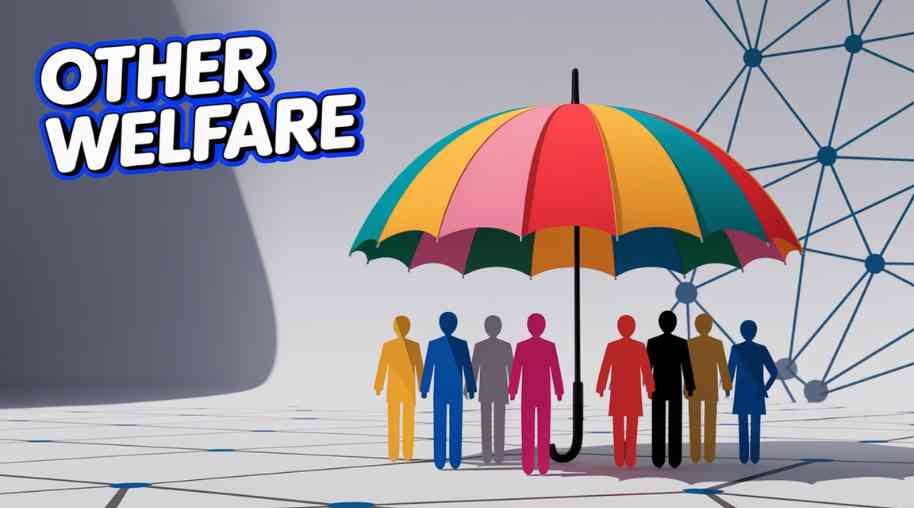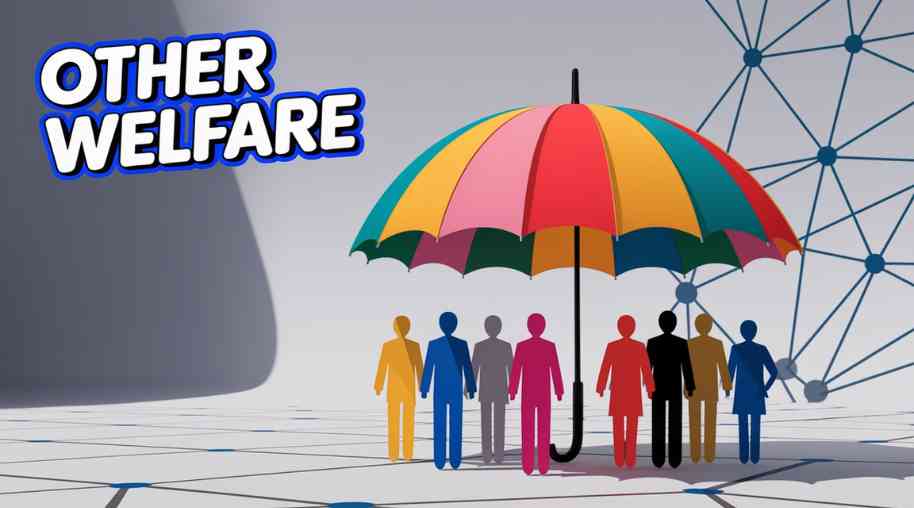OWS Full Form-Other Welfare Schemes
by Shashi Gaherwar
0 1010
Exploring Welfare Schemes: Government Initiatives for Social Upliftment
Introduction
Welfare schemes are government initiatives aimed at improving the socio-economic conditions of citizens by providing financial assistance, healthcare support, education benefits, and employment opportunities. These programs play a crucial role in poverty alleviation, rural development, and social security, ensuring a better quality of life for marginalized communities.

Governments worldwide implement welfare programs tailored to specific needs, including healthcare, education, housing, and employment. This article explores key welfare schemes, their objectives, benefits, and impact on society.
Categories of Welfare Schemes
Government welfare schemes are broadly classified into several categories based on their purpose and target beneficiaries:
1. Healthcare Welfare Schemes
Healthcare-focused schemes ensure that people, especially those below the poverty line (BPL), have access to medical treatment and insurance.
• Ayushman Bharat (India): Provides free health insurance coverage up to ₹5 lakh per family per year.
• Medicaid (USA): Offers healthcare assistance to low-income individuals and families.
• National Health Service (UK): Provides universal healthcare funded by taxes.
• PM National Dialysis Program (India): Offers free dialysis for patients with kidney disease.
Impact:
• Reduces out-of-pocket medical expenses.
• Improves healthcare access for economically weaker sections.
• Reduces mortality rates due to better medical facilities.
2. Educational Welfare Schemes
Education schemes aim to provide financial aid, scholarships, and incentives to encourage learning among underprivileged children.
• Mid-Day Meal Scheme (India): Provides free meals to schoolchildren to enhance enrollment and nutrition.
• National Scholarship Program (Global): Offers financial aid to meritorious students from low-income backgrounds.
• Right to Education (India): Ensures free and compulsory education for children aged 6-14.
• Pell Grant (USA): Provides financial aid for students pursuing higher education.
Impact:
• Increases literacy rates and school enrollment.
• Encourages higher education among economically weaker students.
• Reduces dropout rates by providing financial incentives.
3. Employment and Skill Development Welfare Schemes
These programs focus on skill enhancement and job creation to empower the unemployed population.
• Mahatma Gandhi National Rural Employment Guarantee Act (MGNREGA - India): Guarantees 100 days of wage employment in rural areas.
• Pradhan Mantri Kaushal Vikas Yojana (PMKVY - India): Provides skill training to youth for better employability.
• Unemployment Benefits (Various Countries): Financial aid for individuals who are jobless due to economic downturns.
• Job Corps (USA): A career training program for young adults.
Impact:
• Enhances skill development and employability.
• Reduces rural unemployment and migration.
• Boosts the economy by increasing the skilled workforce.
4. Social Security and Pension Welfare Schemes
These schemes provide financial stability to the elderly, disabled, and economically disadvantaged individuals.
• National Pension Scheme (India): A voluntary retirement savings program.
• Social Security System (USA): Provides financial assistance to retirees, disabled individuals, and survivors.
• Atal Pension Yojana (India): Offers pension benefits for unorganized sector workers.
• Employee Provident Fund (EPF - India): A retirement benefit scheme for salaried employees.
Impact:
• Ensures financial security for retirees and senior citizens.
• Supports disabled individuals and their families.
• Encourages savings and long-term financial planning.
5. Women and Child Welfare Schemes
Women and child-focused schemes ensure better healthcare, nutrition, and financial independence for women and children.
• Beti Bachao Beti Padhao (India): Encourages education and protection of the girl child.
• Ladli Scheme (Various States in India): Provides financial incentives for the education of girl children.
• Women, Infants, and Children (WIC - USA): Nutritional assistance program for pregnant women and young children.
Maternity Benefit Scheme (India): Provides financial assistance to pregnant women for healthcare and nutrition.
Impact:
• Promotes gender equality and women's empowerment.
• Reduces maternal and infant mortality rates.
• Ensures financial security for mothers and children.
6. Housing and Urban Development Welfare Schemes
Housing welfare schemes provide affordable housing to economically weaker sections and middle-income groups.
• Pradhan Mantri Awas Yojana (PMAY - India): Provides affordable housing and financial subsidies for home buyers.
• Section 8 Housing (USA): Government rental assistance for low-income families.
• Indira Awaas Yojana (India): Grants for constructing houses in rural areas.
• Housing Benefits (UK): Financial aid for individuals struggling to pay rent.
Impact:
• Reduces homelessness and improves living conditions.
• Provides access to affordable housing for lower-income groups.
• Boosts real estate and infrastructure development.
Challenges in Implementing Welfare Schemes
Despite the benefits, welfare programs face several challenges:
1. Corruption and Mismanagement: Funds are sometimes misused, leading to inefficiency in program execution.
2. Lack of Awareness: Many eligible beneficiaries are unaware of available schemes.
3. Administrative Delays: Bureaucratic processes slow down fund disbursement and implementation.
4. Financial Constraints: Government budgets may not always support large-scale welfare programs.
5. Exclusion Errors: Some deserving individuals may be left out due to documentation issues.
Government welfare schemes are crucial in ensuring social and economic stability by providing healthcare, education, employment, housing, and financial security to citizens. Despite challenges in implementation, these programs continue to uplift communities and reduce inequality.
To maximize their impact, governments must focus on efficient fund allocation, transparency, digital governance, and public awareness campaigns. As economies evolve, welfare schemes will play an even greater role in fostering inclusive growth and sustainable development.

Share:








Comments
Waiting for your comments